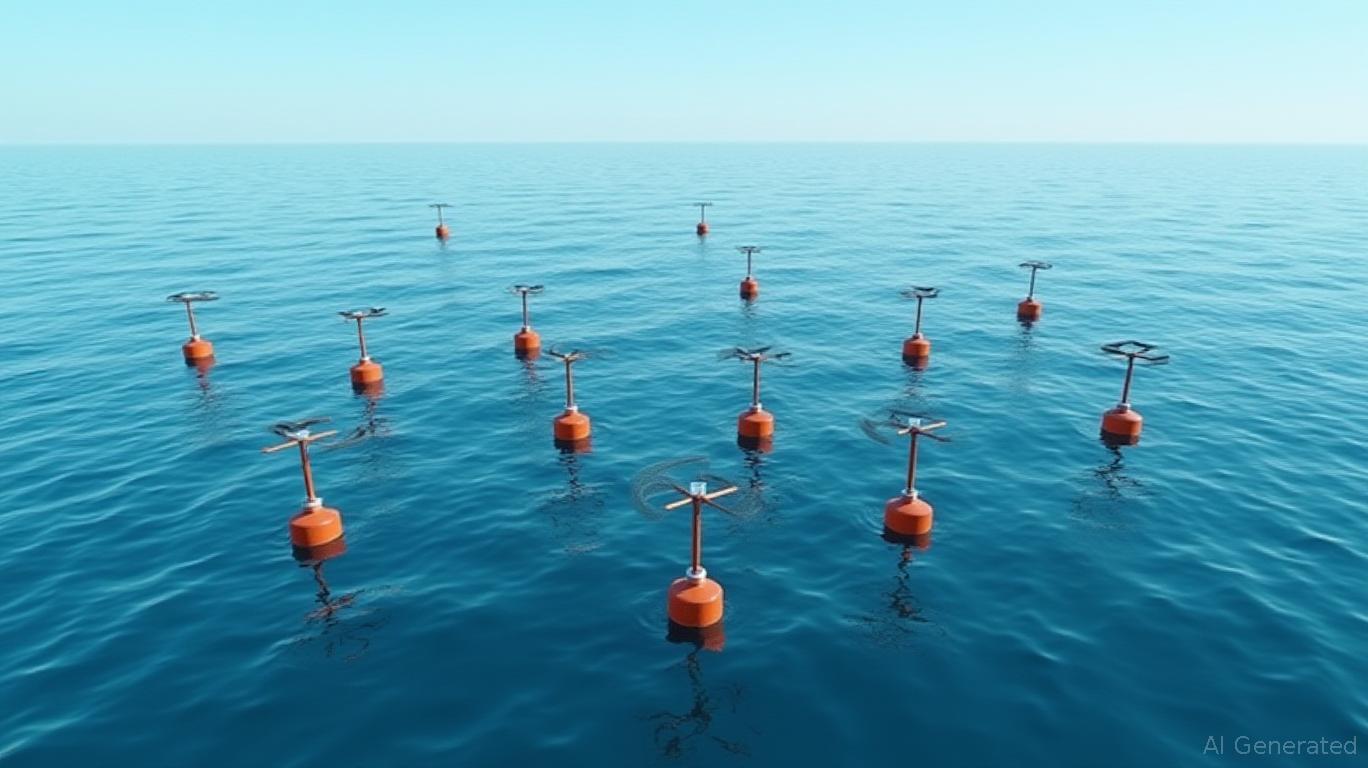Andrenam's Rapid Seed Funding Signals a Tidal Shift in AI-Driven Maritime Defense Tech
The oceans, covering 71% of Earth's surface, are increasingly becoming a theater of geopolitical tension and economic competition. Yet maritime security infrastructure has stagnated in the
age, relying on Cold War-era systems like SOSUS—a network of underwater microphones that required human analysts to interpret fuzzy screens and static-filled audio. Enter Andrenam, a startup founded in 2024 by ex-SpaceX engineer Matej Cernosek and former Qualia software lead Alex Chu, which has just shattered records with a $10 million seed round closed in 36 hours. This lightning-fast funding underscores a seismic shift: investors are betting big on AI-driven solutions to modernize maritime domain awareness. For strategic investors, Andrenam's vertically integrated model—combining proprietary AI with low-cost, attritable hardware—offers a rare opportunity to capitalize on a sector primed for growth, with applications spanning defense, commerce, and environmental monitoring.The Tech: From Hydrophones to AI Mesh Networks
Andrenam's core innovation is its “sonar mesh” system, a distributed network of smart buoys equipped with hydrophones and edge-computing hardware. These buoys passively listen to underwater environments, analyzing acoustic data in real time using machine-learning models trained to detect and classify vessels, submarines, and even non-AIS-emitting threats. Unlike legacy systems, which require human operators to parse data manually, Andrenam's AI autonomously flags anomalies, integrating with satellite networks and command centers for rapid response.

The startup's vertical integration—a strategic differentiator—is key to its scalability. While competitors cobble together systems from third-party hardware, Andrenam is designing its own buoys, optimizing cost, durability, and performance. This approach not only reduces reliance on external suppliers but also accelerates innovation cycles, enabling faster iteration of both hardware and algorithms. Early pilots off California's coast have already demonstrated the system's ability to track vessels in real time, even when AIS signals are spoofed or disabled—a scenario growing more common in contested waters like the South China Sea.
The Market: Dual-Use Tech in a Geopolitically Heated Environment
Andrenam's dual-use value proposition is its secret weapon. Militaries need its technology to detect submarines and smugglers; commercial ports demand it to prevent piracy and secure cargo routes. The global maritime security market, already valued at $13.8 billion in 2023, is projected to grow at a 5.8% CAGR through 2030, driven by rising naval budgets and private-sector demand for autonomous surveillance.
Geopolitical risks are accelerating this trend. As tensions escalate in the Indo-Pacific and Arctic regions, navies are racing to modernize their undersea surveillance. Simultaneously, the shipping industry's $1.3 trillion annual losses to piracy and theft create a commercial market hungry for cost-effective solutions. Andrenam's low-cost buoys—designed to be semi-attritable (reusable but expendable in conflict)—position it to serve both sectors profitably.
Why Now? A Perfect Storm of Innovation and Capital
The startup's 36-hour seed round—led by First Round Capital and including names like Homebrew and the Colorado School of Mines—reflects investor confidence in its team and execution. Cernosek's SpaceX pedigree (where he worked on rocket guidance systems) and Chu's software expertise suggest they can scale hardware and algorithms in tandem. The funding will fuel a doubling of their 8-person team, with a focus on software engineers, and enable the acquisition of a dedicated hardware-testing vessel.
The Pentagon's recent pivot toward “dual-use” defense technologies—systems that serve both military and civilian needs—also bodes well. Andrenam's technology could become a backbone for U.S. port security, while its commercial applications in fisheries management and environmental monitoring open additional revenue streams.
Investment Thesis: High Potential, Low Risk
For investors, Andrenam represents a compelling entry into a niche but rapidly growing sector. Unlike broad cybersecurity or drone firms, its focus on undersea AI is both specialized and defensible. Key risk mitigants include:
- Proven Deployment: Pilots already demonstrate functionality in real-world conditions.
- Vertical Integration: Reduces costs and creates a barrier to entry.
- Dual-Use Demand: Balances military and commercial revenue, reducing reliance on government contracts.
The startup's valuation post-seed (estimated at $60–80 million based on typical seed multiples) suggests significant upside as it scales. Institutional investors and thematic funds focused on defense tech or climate resilience should take note. For comparison, Palantir's early-stage valuation growth (from $10M in 2004 to $18B at IPO) hints at the potential for firms that solve critical security gaps.
Conclusion: Anchoring the Future of Maritime Security
Andrenam's rapid funding and technical execution mark it as a leader in a sector poised to redefine global security. With geopolitical risks pushing militaries to modernize and commercial players seeking cost-effective solutions, the startup's AI-hydrophone mesh is more than a gadget—it's a new paradigm for ocean surveillance. For investors, this is a chance to stake a claim in a $14 billion market before it consolidates. The tides are turning, and Andrenam is surfing ahead of the wave.

Comments
No comments yet